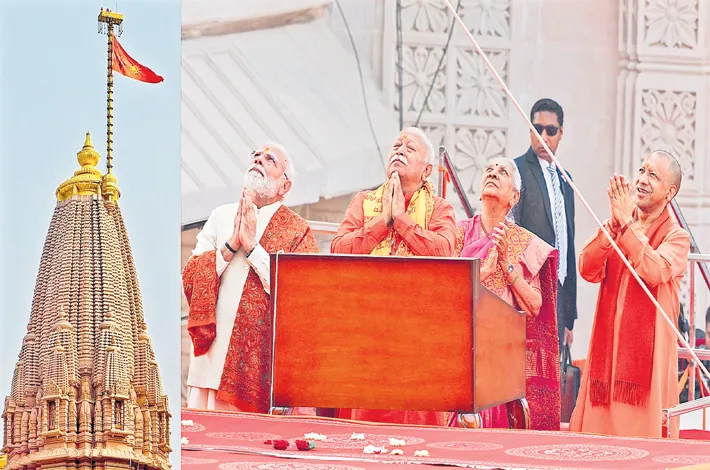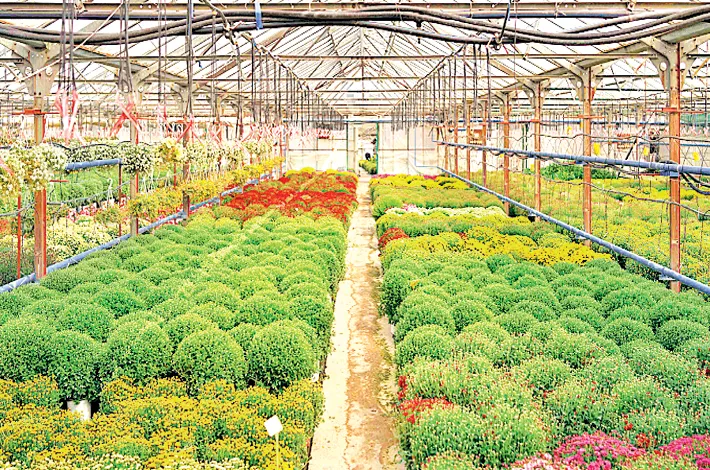Voices strained, transparency demand growing
26-11-2025 12:00:00 AM

Democratic Strain
■ Concerns over secrecy in judicial appointments and lack of clear criteria.
■ Filmmakers report rising self-censorship and shrinking creative space.
■ Stronger laws like UAPA increasingly used against journalists.
■ Bar associations silent even as key judges face sidelining.
India’s constitutional institutions are built on trust — trust that the judiciary acts independently, that the media speaks fearlessly, and that artists create freely without intimidation. Yet across the country, a growing concern is emerging: that the space for open thought, disagreement, and independent judgment is steadily shrinking. Lawyers, filmmakers, journalists, and civil-society voices now warn that India is entering a period where silence feels safer than speech, where institutions remain strong on paper but strained in practice.
At the heart of these concerns lies the question of judicial transparency, especially within the powerful yet opaque collegium system. Judicial independence has long been celebrated as the bedrock of Indian democracy. But independence, critics argue, is being confused with secrecy. A senior Supreme Court advocate recently pointed out that shielding the selection of judges from public scrutiny may be breeding mistrust.
If nobody knows why one candidate is chosen and another rejected, he argued, the system becomes vulnerable to political influence, personal bias, or selective interpretation of merit. For the common citizen, this opacity raises a troubling question: Who decides India’s judges, and on what basis?
While these concerns have been simmering for years, they crystallised sharply after several eminent voices raised a wider debate over transparency, free expression, and institutional silence. This debate underscored a worrying pattern: that multiple pillars of democracy seem to be experiencing the same pressure points at the same time.
Addressing the criticism surrounding judicial appointments, a retired Supreme Court judge offered both clarity and caution. Yes, he said, transparency must improve — but not at the cost of driving away good candidates. Publicly revealing the personal, financial, or professional details of shortlisted lawyers could expose them to needless scrutiny and jeopardise their privacy.
More importantly, he exposed a little-known structural flaw: the long gap between collegium approval and government notification. In many cases, lawyers wait nine to twelve months, unable to practise fully, losing income, and risking the stability of their careers. “In Bombay, nine out of ten shortlisted lawyers said no,” he revealed — a statistic that jolted many in the legal fraternity.
He admitted that when top lawyers decline, the system is forced to compromise on quality. Judicial assessments of practising lawyers remain subjective, based on how senior judges perceive them in court. He also acknowledged concerns that nearly half of recent High Court appointees have been government panel lawyers or public prosecutors, attributing the trend partly to the reluctance of independent lawyers to join the bench.
As judicial concerns unfolded, the conversation widened through the voice of a veteran filmmaker, who described the current climate for creative expression as one of “slow strangulation.” According to him, the biggest danger today is not official censorship but pre-censorship in the mind. Artists now suppress ideas before writing them, fearing backlash, political anger, organised trolling, or financial loss. He cited the refusal of the censor board to clear Punjab ’95 and the pressure on the Oscar-nominated film Homebound to cut scenes — cases he argued demonstrate how creativity is being contained.
He contrasted this with his experience in 1998, when he fought the authorities for three months to release his film Zakm. Even during that politically charged period, he said, there was room to negotiate and convince. Today, he believes that room has shrunk alarmingly. He warned that pushing India’s 1.4 billion people into a single approved narrative amounts to cultural suffocation. OTT platforms have provided some breathing space, he admitted, but even major platforms now avoid politically sensitive content, fearing consequences that go far beyond criticism.
Parallel to this cultural anxiety, a senior journalist pointed to the changing nature of pressure on the media. Earlier, governments influenced the press indirectly — through advertisers, defamation cases, or political outreach. But today, he argued, stronger legal tools are being used: sedition, UAPA, and even anti-terror laws. “The idea is simple,” he said. “Jail a few, silence thousands.” He cited cases like Siddique Kappan’s two-year imprisonment, charges against local reporters who exposed school-meal scams, and detentions of Kashmiri journalists under the PSA. These events, he warned, create a climate where self-censorship becomes a survival instinct.
He was equally critical of television news channels, which he said amplify false nationalist narratives without accountability. He recalled how some channels claimed Indian forces had “captured Karachi” — a fabricated story presented with full dramatic flair. Meanwhile, outlets reporting verifiable international news found themselves blocked or served legal notices. “Truth is no longer judged by accuracy,” he said. “It is judged by alignment.”
Toward the end of the discussion, focus shifted to an institution once seen as the conscience of the legal world: the Bar associations. The retired judge recalled that in 1973, when Indira Gandhi superseded judges, the Supreme Court Bar Association protested immediately. In the 1990s, too, the Bar was vocal whenever judicial independence seemed threatened. Today, he said, even when respected judges like Justice Akil Kureshi or Justice Muralidhar were sidelined, not a single major Bar association issued a resolution. “Faith in the judiciary is weakening,” he warned. “If the Bar, the media, and civil society don’t act, the future will be difficult.”
As these voices combined, one picture became unmistakably clear: India is navigating a dangerous period where institutions work, but with visible strain; where information flows, but with growing filters; where speech is free, but increasingly cautious. The central warning was not that India is losing its democracy — but that India could lose the courage that keeps democracy alive.








